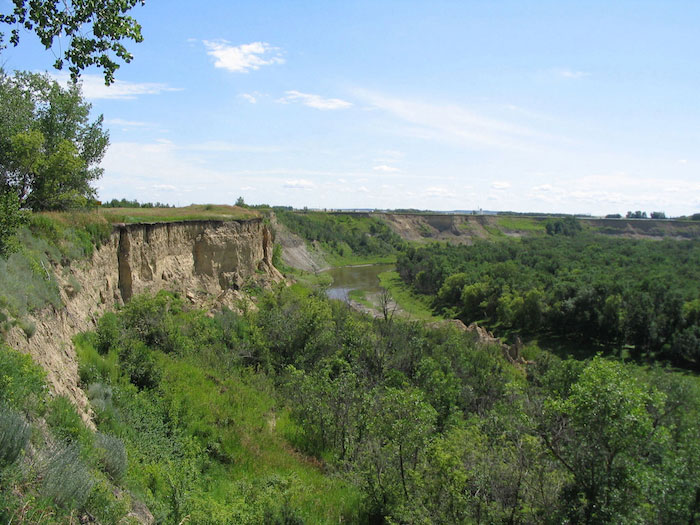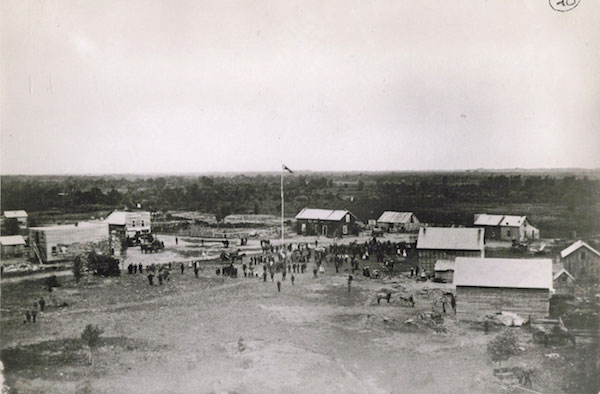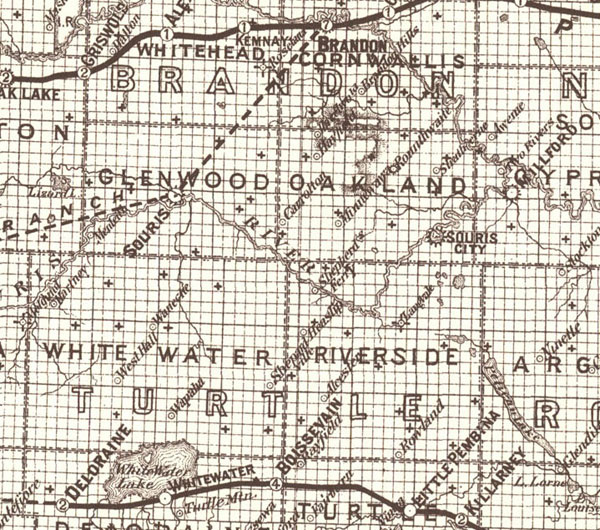

Local History Matters
If we want to engage students (and teachers …
and citizens) in
our nation’s history we should do everything we can to make it real, to
make it relevant, to connect ourselves to the story.
That starts with acknowledging, understanding and appreciating that
interesting and important things happened here.
Textbooks and “survey” histories, by their very nature skip local
details – they are about the big picture. They try to cover all the
bases.
No wonder so many students find them boring.
They not only miss details – they sometimes get them wrong.
History without geography can really miss the point. History without
accurate local content isn’t likely to connect.
Let me offer a seemingly small example.
“The Millennium in Manitoba”, a popular summary of Manitoba history, in
attempting to describe the buffalo hunting culture of Manitoba’s First
Nations, makes the following statement:
“In Alberta, buffalo could be driven over a cliff to their deaths, but
there were no escarpments steep enough in Manitoba.” P5

Now, I’ve been to “Head Smashed in Buffalo Jump” and I’ve paddled down
the Souris River from Souris to Wawanesa. And while it is true that
“Head Smashed In” is a truly significant site, and was used on a huge
scale, we also know that, although buffalo pounds and other methods
were more commonly used on the prairies, more than a few buffalo
perished on our riverbanks as well.
As a student, I might have found that interesting, in History class it
always seemed that the interesting things happened elsewhere.
What we learned about the fur trade, explorers, steamboats, battles.
Stagecoaches, war, crime, industry, adventure – all
were missing a
local connection.
And that’s where local history can step in.
Let me assure you that the previous example, and examples I am about to
use, are from books that are essentially well written and well
researched. They are good books by good historians. Even good books
contain errors. Professional historians make errors, we all make
errors.
My point is that errors are more likely if we write from a distance. To
get accurate, engaging and relevant accounts of history we need to
complement the “professional” work from in texts with the “local”
information from those of us who live here.
Blame Nellie McClung
Back in 1994, as a teacher and a student of history, I knew a bit about
Nellie McClung and her role in the battle for Women’s suffrage. I had
read at least one of her works of fiction, and counted myself well
informed in general. What I didn’t know, what my high school and
university history courses had neglected to tell me, was that she grew
up just a short distance from my home town. In the numerous times
that I had driven down Highway #2 in the Wawanesa area, I had passed
within
sight of the school yard were she got her early education, within a few
kilometres of the homestead where she grew up. In fact I knew distant
relatives of hers, (there still are quite a few in the area) before I
knew anything about her early life.
I would have appreciated that information. I think that knowing about a
local concrete link to this prominent Canadian would have made History
a bit more real for me.
In that sense, geography matters. Historians can be somewhat careless
about physical details that might establish more of a sense of place to
the stories of the past.
The
Encyclopedia
of Manitoba (an excellent volume)
lists Nellie’s childhood home as Millbrook (p409). “The Millennium in
Manitoba” another very useful book, claims that Nellie “had little
formal education – five years of public school before her family moved
west in 1884 (p95), and “Manitoba 125 tells us that her
family
homesteaded in Manitou.(p122)
A most cursory glance at one of several local
histories, let alone a reading of her own very readable memoir "A
Clearing in the West", would
quickly uncover the facts that she got her public school education in
Northfield School, near the village of Wawanesa, after moving to a farm
near Millford in 1880. Manitou was where she moved to get a
teaching job, and where she lived when taking those first steps to a
career in writing.

Nellie wrote extensively about her early years on the farm, and about
the nearby village of Millford, a well-established village before
Brandon and other Westman communities were established.

In 1887, after the railway arrived and numerous
villages were started, Millford was still on the map.
Most publications correctly state that she came to
Manitoba as a child, and avoid details by saying, “to farm on the
Souris River”. Its a loog river. An Aug. 25 1973 article in the Brandon
Sun that
summarizes her accomplishments on the occasion of a stamp being issued
in her honour, begins by missing her date of birth by six years, and
ignoring her childhood except for saying that she moved to Manitoba in
1880.
This, to me, reflects a general lack of concern about location, a
mindset in which such details are of little consequence.
To be sure those details might seem trivial – of interest only to those
local people who want to lay claim to her story. But I think those
details matter. For one thing, each of those mistaken facts cause me to
wonder what other details were fiction. Surely historical accuracy is
of value in and of itself, even if it involves events that took place
beyond the perimeter, so to speak?
We also should recognize that in trying to understand how a person
forms values, opinions, skills, and aptitudes; those childhood years
really do matter.
The people in Wawanesa, Manitoba, know exactly where Nellie McClung
lived as a child, where she attended school, where she attended the
Dominion Day Picnic in 1883 ... where she became herself.
I didn’t know.
I think that instead of bemoaning the fact that interest in History
seems to be declining, we should be examining the possibility that if
we allow for an easier connection between the somewhat abstract facts,
figures and dates, and the physical concrete places, buildings and
artifacts, we will find that people indeed do like history.
Aside from that; helping us have a better understanding of the story to
be told, and proper details about place, might also help us understand
the
people. I think it is pretty well accepted that the experiences of
one’s formative years are important.
The people of Wawanesa, Manitoba, where in 1896 Nellie Mooney married
Wesley McClung in a church that still stands overlooking the Souris
River valley, are proud of the community’s link to the lady and her
achievements. The woman who became known as "Our Nell", was "Their
Nell" long before she became famous.
In the following presentation I will look at some seemingly ordinary
buildings and sites with a view to uncovering what they might tell us
about our history.

|
 |
|
|
|